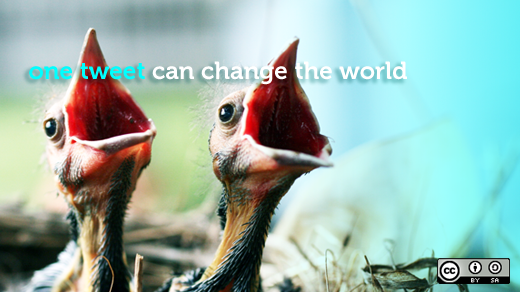Wikipedia:Academic use
"Wikipedia is not considered a credible source."
A fantastic opening statement.
Should I add a poll here?
Do you Agree or Disagree with that statement?
a) Agree
b) Disagree
"Wikipedia is not considered a credible source."
What is learning?Activity: Think about the last time you learned something. Describe what you learned? How did you go about learning it? What strategies did you use? Consider this overview of categories of learning “suitable for instructional design planning“ in the table
 |
| Source: http://www.flickr.com/photos/opensourceway/ |
 |
| Digital learner profile- Results |
Learner Networker Your Score = 5
You may not be comfortable collaborating and sharing ideas online – perhaps you prefer to do this face to face or you like your social networks to be kept separate from your college work. You may not feel confident that what you know is worth sharing.
Digital Sceptic Your Score = 4
If you have a low score in this area you are confident and enthusiastic user of digital technology. However, you may need to reflect more deeply on why you use the tools and services you do.
To what extent should learning design be supported computationally – A webinar discussion between Diana Laurillard and Stephen Downes http://repository.alt.ac.uk/2209/
"This hands-on course introduces participants to Blackboard – a web-based environment used at Victoria to provide online support for learning and teaching. This course provides an overview of Blackboard tools and functionalities. You will learn how to set up a basic course web site, upload and modify course content, set up discussion boards and other communication tools. We will also consider issues of good practice in online teaching and learning. ***Using Mixed Media - Please bring your headphones for this session***"Learner feedback indicates that the activities planned are suited to the achievement of the learning objectives. The main challenge is the variety of experience and confidence of staff, some find the session too long and slow while others find it challenging with too much and too little time.
"Is there sometimes a tension what students (say they) want and what might be more beneficial to their learning?"
Theory-informed TEL - Theories of learning V theories of teaching.Q3 - The trade off I have encountered is there is a balance between the expensive slick resource for large scale long term reuse and the cheaper less polished resource which may be for small scale local/discipline specific reuse.
University of Manitoba Decision to make the entire instructional process available. No additional cost in making the course available to 1000 learners versus 20, "no additional costs to us as educators".
Repeated MOOCs over several years 10000 participants so far!
Educational providers should stop providing learning spaces and allow learners to bring their own spaces.
Focus on the course content being a conduit for connections, not for students to learn the content'.
Need to design a distributed learning model. Challenges for existing universities .
Distributed learning model will meet costs. Global faculty member, Institutions joining together to deliver!DL model allows any existing educator to influence a global audience far reaching beyond the 'instutution/ classroom without increasing costs dramatically.
Dissolution of the boundaries of institutional control!Wow.
"Inclusive Webinar Design and Delivery" #altc A collection of links to come back to ..... https://www.assertion-evidence.com/ h...